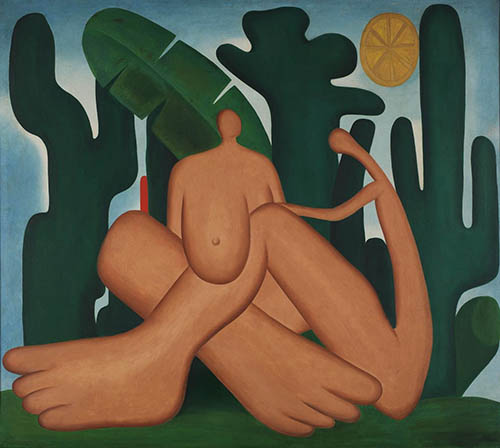CulBeat Express
2017.07.25 14:22
브라질 작가 타르실라 두 아마랄 회고전@MoMA(2/11-6/3)
조회 수 2011 댓글 0
The Museum of Modern Art Announces
the First Major U.S. Museum Exhibition of Tarsila do Amaral
Tarsila do Amaral: Inventing Modern Art in Brazil

NEW YORK, July 25, 2017—With Tarsila do Amaral: Inventing Modern Art in Brazil, The Museum of Modern Art and the Art Institute of Chicago will present the first exhibition in North America exclusively dedicated to the pioneering work of Tarsila do Amaral (Brazilian, 1886–1973), one of the greatest Brazilian artists of the 20th century. On view at The Museum of Modern Art from February 11 through June 3, 2018, the exhibition will focus on Do Amaral’s pivotal production from the 1920s, tracing the path of her groundbreaking contributions through approximately 130 works, including paintings, drawings, sketchbooks, and photographs drawn from collections across the United States, Latin America, and Europe. Tarsila do Amaral: Inventing Modern Art in Brazil is organized by The Museum of Modern Art and the Art Institute of Chicago, by Luis Pérez-Oramas, former Estrellita Brodsky Curator of Latin American Art, The Museum of Modern Art, and Stephanie D’Alessandro, former Gary C. and Frances Comer Curator of International Modern Art, the Art Institute of Chicago; with Karen Grimson, Curatorial Assistant, Department of Drawings and Prints, The Museum of Modern Art, and Katja Dominique Rivera, Research Associate, Department of Modern and Contemporary Art, the Art Institute of Chicago. Prior to its presentation at The Museum of Modern Art, the exhibition will be on view at the Art Institute of Chicago from October 8, 2017, through January 7, 2018.
Serving as a long-overdue introduction to this major Brazilian modernist for North American audiences, the exhibition will highlight the artist’s production from the 1920s and her critical contributions to the birth of modern art in Brazil. Combining a chronological display with a thematic approach, the exhibition will survey Do Amaral's career, from her earliest Parisian works, to the emblematic modernist paintings produced upon her return to Brazil, ending with her large-scale, socially driven works of the early 1930s. Central to the exhibition is the reunion of three landmark paintings: The Black Woman (A Negra) (1923), Abaporu (1928), and Antropophagy (Antropofagia) (1929), a transformational series of works that were last exhibited jointly in North America in 1993, in the MoMA exhibition Latin American Artists of the Twentieth Century.






